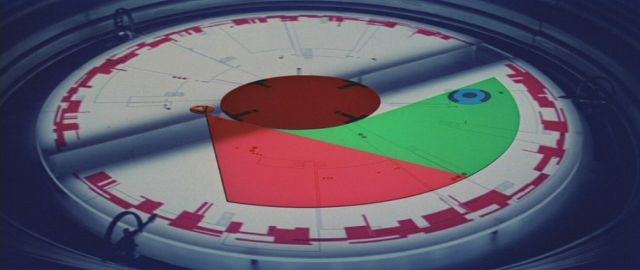I'm not a man prone to hyperbole, because as we all know....
So let's take a moment to quantify what I have said; to give it shape and form apart from the naked grandioseness from which it is born and likely floats within the reader's head. Although Star Wars hardly needs an introduction, I am referring to specific aspects which made it unique. For one, Star Wars was a remarkable spectacle. It was visually unlike anything that had proceeded it. Surely, there had been science fiction, space ships, action, and sword fights all depicted upon the screen, but no one had put together the sort of action sequences and convincing aesthetic on such a grand and engrossing scale as did a pre-turkey neck George Lucas and the scrappy, upstart effects house Industrial Light and Magic.
 |
| This guy could make a movie. |
Finally, Star Wars was a magical combination of unique and familiar. George Lucas would be the first to tell you that he is standing on the shoulders of giants (harf harf obvious fat joke.) The classic hero's journey, the films of Akira Kurosawa, WWII propaganda films, and the science fiction and adventure serials of the 1930s are all plain as day to see within Star Wars. In a way, they are comforting, classic. Friends along with us on the journey, giving us context from which to interpret what is around us. And yet, 31 years later, I'd do anything to hop into an X-Wing and go explore the Outter Rim. Not because I would find it familiar, but the opposite. It will be strange, and new, and filled with things I've never seen before. One quick pint at the Mos Eisley Cantina tells me that. Surely, this is a fantasy, but one born out of the compelling originality of the Star Wars story, and its singular place in pantheon of film-born universe building.
So how does this all apply to Pacific Rim? Find out after the break.
Let's clear some shit up right quick. Pacific Rim is not a perfect film, and neither is Star Wars. Both have flaws that some might consider glaring. Both, indubitably, ask you to suspend disbelief and accept an internal logic foreign from our own understanding of how the world works. Both have moments that stretch our understanding of what "practicality" and "efficiency" look like. You know what? In this fucking universe, a
 |
| Derp |
If these small warts do not disqualify you from being able to enjoy a film, I would like to both congratulate you on your essential human quality of imagination, and welcome you to the club of smug pricks who will have the opportunity to make people who are five years old right now really jealous in fifteen years when we talk about going to see Pacific Rim for the first time. Bunch of spoiled brats, anyway.
Here's what's not going to shock you: the most truly awesome part of Pacific Rim is... (Drumroll) GIANT FUCKING ROBOTS PUNCHING THINGS. If you're not the type to be impressed with giant robots, as a genre, I'm not sure how to help you, but I urge you to see a doctor, or at least watch some Voltron or something. But here's what I love about this movie: They could have made a movie about giant robots punching things, with not a lot of embellishment. There could have been punches, and maybe a kick or two, and that would have been great. Maybe a robot would jump and you'd go "oh shit, dat is majestic as fuck." But Guillermo Del Toro next leveled everything about robots fighting giant monsters. Every fight scene, and there were plenty, was filled with what I would call "Sequel Moves."
 |
| About to be some "Sequel Moves" up in here |
When I say "Sequel Moves" I'm referring to a level of action and choreography that is so over-the-top visually exciting, creative, dynamic, and engaging, such that they could have easily been left out of the movie, and saved as "toppers" for the next film. It is rare indeed that I have found myself honestly surprised during something as commonplace as a Hollywood fight scene. When watching the battles of Pacific Rim, I, several times, felt my eyes opening wide to take in the remnants of what I had just seen. An attempt to gather forensic evidence of the events which, truly, were so unbelievable in their claims as to demand proof that they had just been witnessed. I tread lightly as I use the word "unbelievable." Not because it is inaccurate, but merely because the reader might confuse it with "unconvincing." Suffice to say, my eyes wide, I took in the evidence, and I was made to believe.
You may have noticed that I have yet to mention the plot of this movie, despite being a bit of a stickler for that sort of a thing. Obviously, I'd like to avoid spoilers here, so I'll pitch the premise and what I like about it. We know this is a movie about robots, termed jaegers, fighting giant monsters, pleasingly called kaiju, referencing the Japanese monster movie genre of the same name. That premise is absurd. Yet, within the first 15 minutes of the movie, you receive an exposition download, via voice-over and "show don't tell" narrative that not only provided as plausible an explanation for why giant monsters are coming out of the ocean as you are going to get, but served the far more important role of reassuring me, as a viewer, that we were in good hands. It was an affirmation of good writing, and a neat trick, and that counts for a lot. Further, the immersion and immediacy of the plot is convincing. We are dumped not in the origin story; the first kaiju comes and goes within the first 10 minutes of the opening flashback exposition. Instead, we're dropped in the middle of a decade long war, and humanity is losing! The stakes are high, and tension underscores even the talkiest dialogue scenes. Part of what makes this great is that so much of the visual information outside of the fight scenes serves to support this plot structure. Just like Star Wars, everything is dirty, used, worn, or even destroyed.
Another positive dimension of the movie was that it avoided being specifically American in character. This, of course, can be attributed in part to the roots in the kaiju and gundam genres from which the movie draws its inspiration, both thoroughly Japanese in origin. However, with the glut of summer movies who have inundated us with a variety of clumsy post 9/11 commentaries about drone strikes, terror, building collapses, and city destruction, it would not be a suprise to find some genius had decided to "Westernize" things, and make it "appealing to an American Audience." It was refreshing to experience a story that felt a little more timeless and a little bit more "international" in character. It allowed the viewer to be transported from their current time and place, rather than be beat over the head with it, which, you would think, is an essential element of summer escapism. Star Wars certainly thought so.
Speaking of the international character of the film, another notable triumph is the characters which inhabit it. The cast is multi-ethnic, multi-cultural and varied. Perhaps most remarkably, the main female protagonist, Mako Mori, played by Rinko Kikuchi, manages to be Japanese without being Orientalised (the film does contain a bit of Orientalism, in general, but that was absent of Mako as a character and can, potentially, be attributed to the genre itself) and perhaps even more remarkably, manages to be female, and even vulnerable, without being victimized or helpless. Indeed, she is anything but, spending most of the movie kicking ass in a jaeger. To top it all off, Mako is given a plausible motivation which, notably, does not revolve around a male or love interest. Indeed, if there was a romantic sub-plot to this movie, it was so understated as to largely be non-existent. If there is sexual tension, it is not even realized in so much as a kiss-it goes no further than a little ogling.
The rest of the cast carries with it a memorability, as well as distinctiveness that dos not rely purely on ethnicity or stereotypes, also reminiscent of Star Wars. Idris Elba delivers a powerful performance, with an accent that is essentially inscrutable as to origin, but never mentions that he is black. It simply isn't an issue in
 |
| Meesa So Racist |
Additionally, as mentioned above, part of the genius this film shares with Star Wars is how it stands on the familiar while presenting something new. Sadly, I'm no expert in either the kaiju or gundam genres, but I'm familiar enough to recognize the tropes. From Kaiju we see cities being smashed, the populace looking on and running, the monster ascending from the water, and most importantly, the desperate hope of one on one battles as a means of abating the crisis and defeating the monster. From gundam, you have, well, giant fucking robots punching things, the concept of escalation in size, both of the enemy as well as the arsenal used against them, an actually deft handling of the nigh essential, but perhaps overly campy, trope of calling out attacks before they are executed. And still, despite this laundry list, I emphasize, we're left with something we've never, ever seen before.
This movie was a moment I'm not going to forget. The checklist is fully checked. Awesome visuals, check. Seamless CGI, check. Compelling story, check. Memorable, unique characters, check. Tension, thrills, and an overarching sense of originality, check. A feeling of timeless, classic filmmaking, check. This movie succeeds on all these levels, despite the challenge and ambitiousness of this project, in a way that even more modest films never approach. As I sit here, and think of all the jaegers I want to learn about, and the universe I want to explore, the time I want to spend inhabiting this world discovering the strangeness and celebrating its ethic, I know now, with a certainty, what it must have felt like back in 1977. Congratulations, teens, 20-somethings, and 30-somethings, we finally made it.


No comments:
Post a Comment